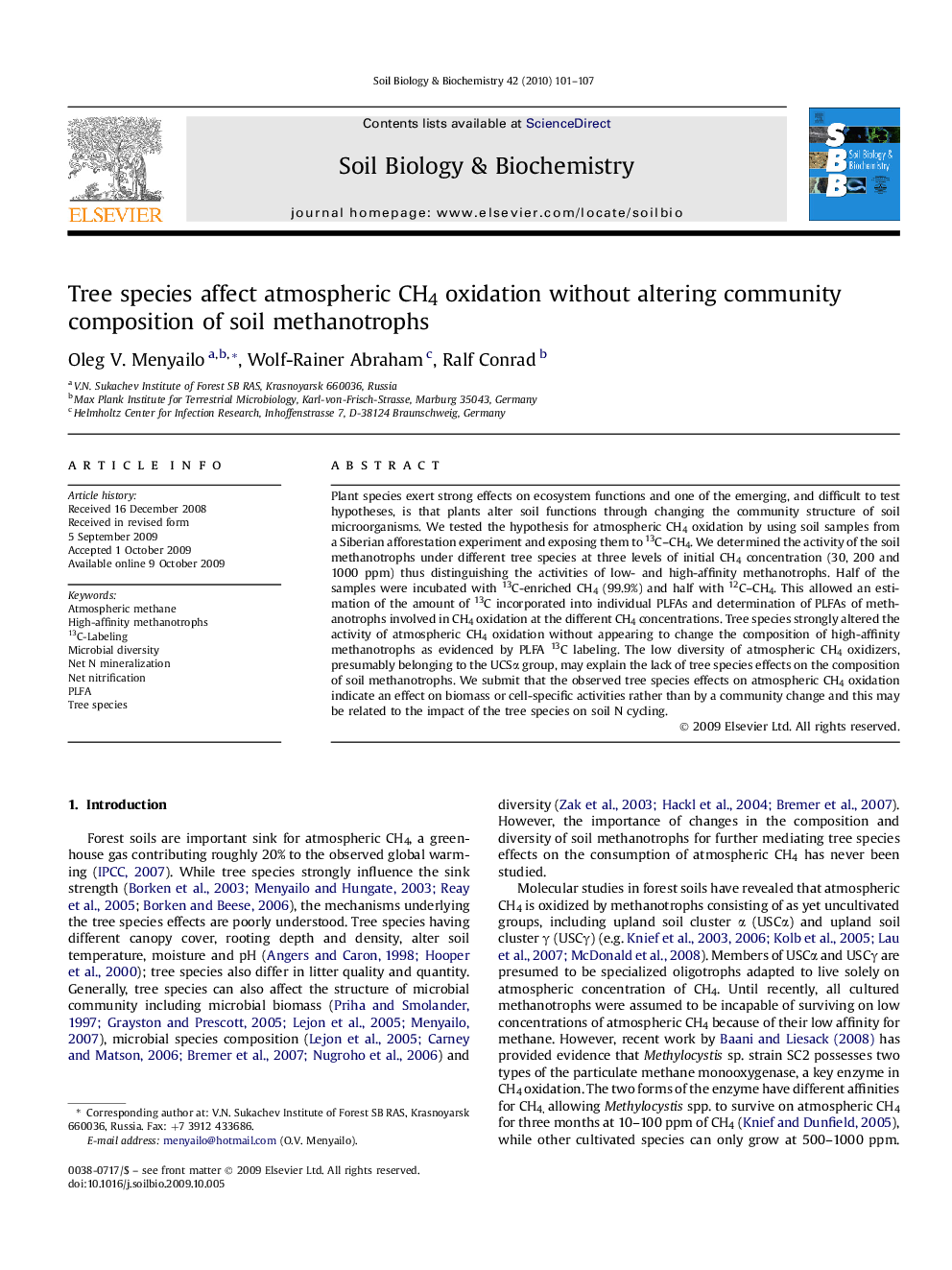| Article ID | Journal | Published Year | Pages | File Type |
|---|---|---|---|---|
| 2025278 | Soil Biology and Biochemistry | 2010 | 7 Pages |
Plant species exert strong effects on ecosystem functions and one of the emerging, and difficult to test hypotheses, is that plants alter soil functions through changing the community structure of soil microorganisms. We tested the hypothesis for atmospheric CH4 oxidation by using soil samples from a Siberian afforestation experiment and exposing them to 13C–CH4. We determined the activity of the soil methanotrophs under different tree species at three levels of initial CH4 concentration (30, 200 and 1000 ppm) thus distinguishing the activities of low- and high-affinity methanotrophs. Half of the samples were incubated with 13C-enriched CH4 (99.9%) and half with 12C–CH4. This allowed an estimation of the amount of 13C incorporated into individual PLFAs and determination of PLFAs of methanotrophs involved in CH4 oxidation at the different CH4 concentrations. Tree species strongly altered the activity of atmospheric CH4 oxidation without appearing to change the composition of high-affinity methanotrophs as evidenced by PLFA 13C labeling. The low diversity of atmospheric CH4 oxidizers, presumably belonging to the UCSα group, may explain the lack of tree species effects on the composition of soil methanotrophs. We submit that the observed tree species effects on atmospheric CH4 oxidation indicate an effect on biomass or cell-specific activities rather than by a community change and this may be related to the impact of the tree species on soil N cycling.
